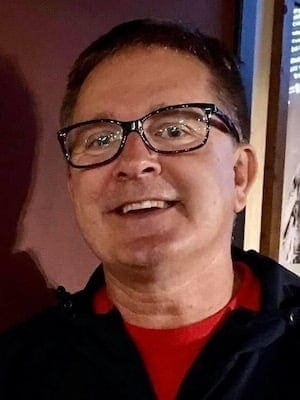Gregory Boyle is a Jesuit priest and the founder of Homeboy Industries in East Los Angeles, California.
He lives and works in his economically poor and gang-riddled community, building kinship and making close relationships and connections with the people around him.
He affectionately calls his parishioners “homies,” and they affectionately call him “G-Dog.”
I highly recommend his book, “Tattoos on the Heart: The Power of Boundless Compassion,” if you, too, are interested in building kinship in the world.
In the book, Boyle tells the story of taking two “homies” to the White House as a part of then First Lady Laura Bush’s Helping America’s Youth campaign.
On the flight back to Los Angeles, one of the homies talks to a flight attendant and tells her about his life, about what his life had been, about going to the White House, and about what his life was becoming.
His story made the flight attendant cry, he tells Boyle, who says, “Well, mijo, whaddya ‘spect? She just caught a glimpse of ya. She saw that you are somebody. She recognized you as the shape of God’s heart. Sometimes people cry when they see that.”
As an elementary school teacher and a writer, often I recognize my students as the shape of God’s heart and write about them through tears of wonder.
One of those students is Maria, a 7-year-old second-grader. Her parents fled the after effects of a brutal civil war in El Salvador and found a new life on the farms and in the fields of South Carolina.
She is like those farms and fields, with dark skin the color of the ground and a garden of a heart that produces love and joy as if they were tomatoes and beans.
I have seen her hold the hand of a frightened kindergartner in the cafeteria lunch line during early morning breakfast and offer her shoulder to a crying friend who scraped her knee on the blacktop during recess. She is a beautiful child.
I can see her smile from all the way down at the end of the hall from the front office.
Sometimes, I can hear her steps from there, too, because on special days she wears tiny high-heeled shoes with her flowery dresses, and I can hear the click, click, click as she makes her way toward me over the tiled floor. This always makes me stop and smile.
One day, I realized I forgot to send my money through the mail to the water company to pay my bill. I stopped by the office to make my payment in person after school.
Apparently, three-fourths of the residents of Greenville County forgot to send in their payments, too, because the place was full of people.
In the middle of all of that humanity, I heard a click, click, click. I looked up and coming around a desk was Maria!
She was pushing a stroller with a tiny baby inside of it. I could barely see her over the handles of the stroller. She was leading her mother, who was holding a toddler in her arms.
She saw me. Her face lit up with her Maria smile. She let go of the stroller for just a moment, wrapped her arms around me and said, “Oh, Mr. Barton! Buenos tardes! I am always so glad to see you!”
She took hold of the stroller again and I lost her among the faces of the people around me.
But I heard her voice, her sincere, serious voice, rise above the noise. “Excuse me,” she said, “but could you help us pay our bill?”
And there was Maria, 7 years old, translating for her mother, helping her family, sharing her life with our world.
Oscar Romero, the archbishop of El Salvador martyred by the bullet of a right-wing assassin in 1980, once entreated us in a sermon to try to organize life according to the heart of God.
My little Maria does this every day, as do so many of my immigrant neighbors in my school, community, state and country.
Just as Maria’s family was a refugee from a war-torn land, there are many refugees trying to find a new life and a deeper hope in a place that will welcome them with an open heart and a helping hand.
I hope you see their faces, listen to their stories and see them as the shape of God’s heart as you hear the words “refugee” and “immigrant” in the coming days. I hope you see Maria.
 Trevor Barton teaches second grade and is a member of First Baptist Church in Greenville, South Carolina. You can follow him on Twitter @teachandwrite. A version of this article originally appeared in The Greenville Journal and is used with permission.
Trevor Barton teaches second grade and is a member of First Baptist Church in Greenville, South Carolina. You can follow him on Twitter @teachandwrite. A version of this article originally appeared in The Greenville Journal and is used with permission.
A fourth grade public school teacher and member of First Baptist Church in Greenville, South Carolina.

